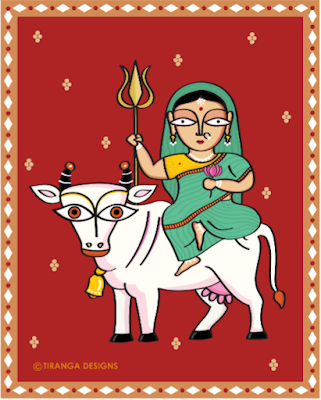Vijayadashami popularly known as DUSSEHRA, is a famous and significant Hindu festival celebrated not only in India but also in many other parts of the world. The nine days before the ultimate festival is also celebrated with enthusiasm as Navratri. Vijayadashami is celebrated on the tenth day of Shukla paksha in the month of Ashwin (as per the Hindu calendar). It marks the end of Navratri and is also a symbol of good defeating evil. Here's an in-depth look into its significance, rituals, and symbolism:### Significance
- **Victory of Good over Evil**: Vijaya Dashami commemorates the victory of Lord Rama over the demon king Ravana, as depicted in the epic Ramayana. This victory symbolizes the triumph of righteousness, dharma (righteousness), and truth over adharma (unrighteousness) and falsehood.
- **Goddess Durga's Victory**: It also celebrates the victory of Goddess Durga over the buffalo demon Mahishasura, symbolizing the power of the divine feminine to destroy evil and ignorance.
- **Kautsa Story**: Another legend associated with Vijaya Dashami involves the sage Kautsa, who was gifted gold from Indra to fulfill his promise to his teacher, Vedashira. This story highlights the importance of duty, generosity, and the power of blessings.
### Rituals and Celebrations
- **Ramlila and Ravan Dahan**:
- In many parts of India, particularly in North India, the festival is marked by the performance of **Ramlila**, a theatrical enactment of the Ramayana. The celebrations often conclude with **Ravan Dahan**, where effigies of Ravana, his brother Kumbhakarna, and son Meghnad are burned at night, symbolizing the destruction of evil.
- **Kanya Pujan**: On this day, young girls (kanyas) representing various forms of the goddess are worshipped, fed, and given gifts. This ritual signifies respect for the divine feminine and the nurturing aspect of life.
- **Ayudha Puja**: In South India, especially in Karnataka and Tamil Nadu, tools, books, and implements are worshipped, acknowledging the importance of knowledge, arts, and craftsmanship. This is known as **Ayudha Puja** or **Shastra Puja**.
- **Vijaya Dashami Processions**: In some regions, grand processions of deities are taken out, especially of Goddess Chamundeshwari in Mysore, where a grand parade with elephants, traditional dancers, and musicians marks the festival.
- **Cultural Performances**: Various cultural programs, including music, dance, and drama, are organized, celebrating the rich heritage and arts of the region.
### Symbolism
- **Renewal and New Beginnings**: Vijaya Dashami is seen as an auspicious day to start new ventures, as it signifies the beginning of a period where good prevails. It's common for people to start new businesses or other significant endeavors on this day.
- **Personal Victory**: On a personal level, it's a time for individuals to reflect on their own lives, seeking to overcome their personal demons or negative traits, aspiring for moral and spiritual victories.
- **Educational Importance**: The festival also underscores the value of education and knowledge, with students often worshipping their books and educational tools during the Navratri period leading up to Vijaya Dashami.
### Conclusion
Vijaya Dashami, with its myriad of rituals and celebrations, encapsulates the essence of overcoming evil with good, ignorance with knowledge, and chaos with order. It concludes the Navratri celebrations by reinforcing the message of divine intervention in human affairs, the importance of righteousness, and the continuous battle against one's inner demons. This festival not only serves as a cultural and religious event but also as a philosophical guide, encouraging individuals towards self-improvement and societal harmony.
Dussehra Song: Shri Ramachandra Kripalu
.jpg)













